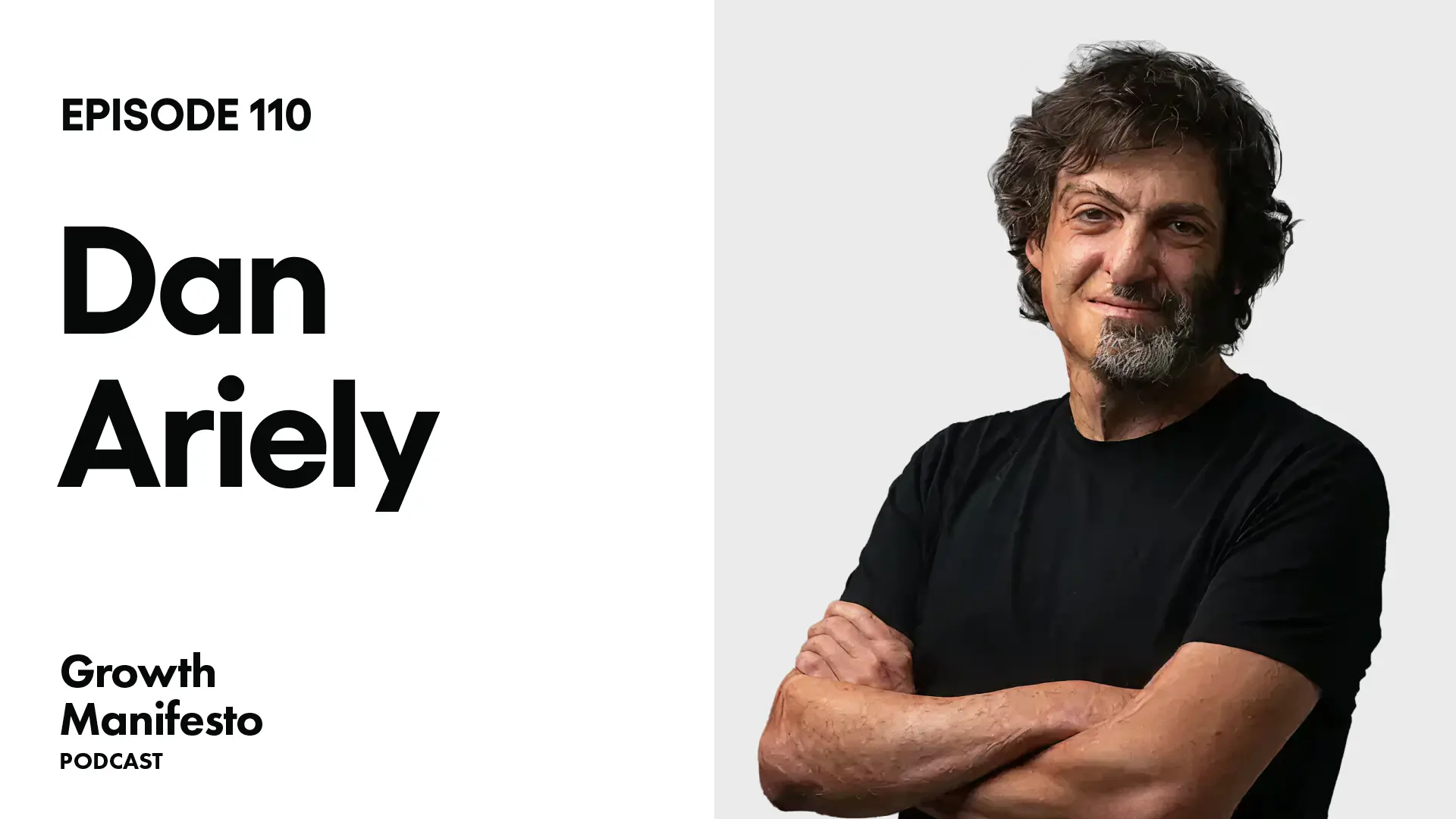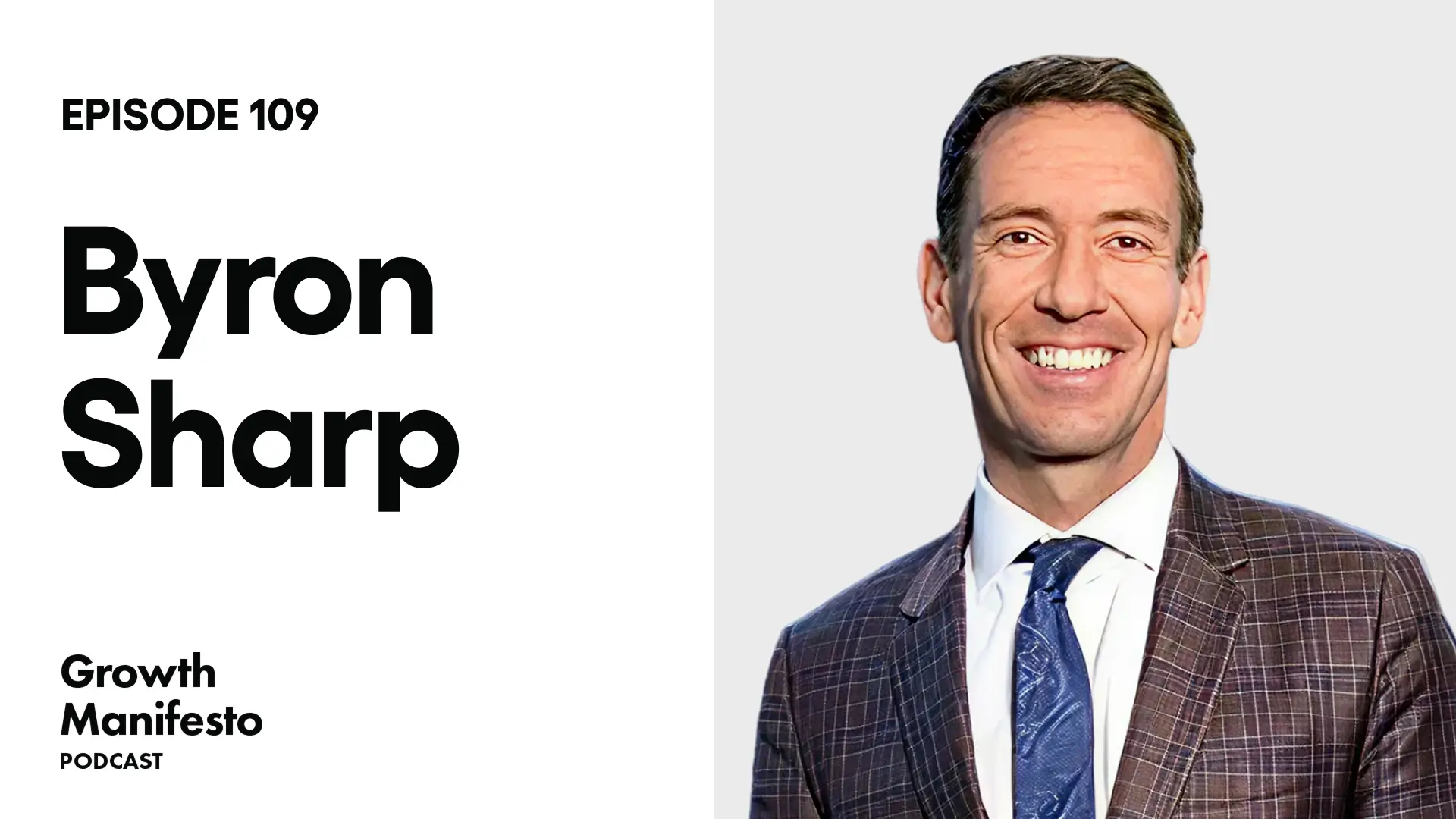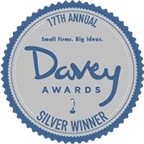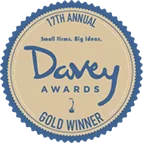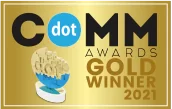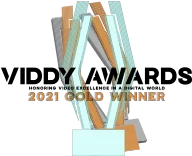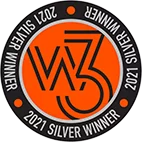How to use NFTs to fund creative projects
This episode is with Julie Pacino – photographer, filmmaker, and who recently funded her new film ‘I Live Here Now’ through NFTs, with primary sales coming in at $1m and generating an additional $480k through secondary sales so far. In this episode we talk about how to use NFTs to fund creative projects, talking through the process that Julie went through to raise money for her new film.
LINKS
- Julie’s OpenSea NFT Collection
- Julie Pacino on LinkedIn
- Julie Pacino on Twitter
- Julie Pacino on Instagram
—
You’re listening to The Growth Manifesto Podcast, a Zoom video series brought to you by Webprofits – a digital growth consultancy that helps global and national businesses attract, acquire, and retain customers through digital marketing.
Hosted by Alex Cleanthous.
- YouTube: https://www.youtube.com/c/GrowthManifestoPodcast
- Instagram: https://www.instagram.com/webprofits/
- LinkedIn: https://www.linkedin.com/company/web-profits/
- Facebook: https://www.facebook.com/Webprofits/
- Twitter: https://twitter.com/webprofits
- Agency: https://www.webprofits.io
SHOW NOTES
- 00:01:37 Julie Pacino’s introduction to the growth manifesto podcast
- 00:02:41 Julie talks about her film ‘I Live Here Now’
- 00:05:34 The series of thoughts which led to change the traditional funding of her film
- 00:09:11 Julie talks about the traditional challenges of producing a film
- 00:12:10 NFTs funding an industry of independent films
- 00:14:16 Julie’s NFTs
- 00:15:09 What is the process of getting NFTs on the open sea platform
- 00:16:24 What other platforms are good for smaller collections
- 00:17:34 Julie talks about her experience as a creative in the NFT world
- 00:18:51 The promotion and communication behind selling out in 30 mins
- 00:21:08 Julie talks about the experience of selling out in 30 mins
- 00:23:21 What kind of people purchased the NFTs
- 00:25:16 Julie talks about the second NFT drop
- 00:29:09 How much work is involved in creating her collection
- 00:31:04 Julie talks about the sales on third drop (500 in the first week)
- 00:33:34 How Julie decided on the mint price (0.09)
- 00:36:20 Royalties on the resales
- 00:38:44 Julie’s approach to secondary market
- 00:40:51 The utility of tokens and how to manage communication
- 00:44:40 What needs to happen to traditional approaches of funding?
- 00:48:25 How are you dealing with the self-pressure?
- 00:51:00 How to get involved in Julie’s project?
TRANSCRIPT
Julie Pacino:
There’s a lot of gate keepers and gate keeping that goes on in the film business in Hollywood, even in the indie, independent film circle, film festivals. It’s very political and it’s very gate kept. That’s coming from me, who I’ve gotten my foot in a lot of doors. I grew up with a family in the business. And so, I was able to get to the front of a lot of lines and still was told no.
That’s not to say that I’m entitled to something or anything, but I really have always felt and still feel that I have a voice in this space that’s unique. I have things that are important to express through the medium of film, that haven’t been expressed in the way that I want to express them, that I think can really help other people.
And so, to be told no because my vision doesn’t fit into this set of outdated rules or into this strange formula that people have decided makes a film successful, that is the challenge that most filmmakers face, is like, “Well, who’s famous that’s in your movie?” Or, “Who’s shooting a gun in your movie?” There is just this set of rules that we’re told, if we can’t tick those boxes, then our art is not worth anything.
Alex Clenthous:
This is Alex Cleanthous, and today we’re talking with Julie Pacino, who’s a photographer, a filmmaker, and who recently funded her new film, I Live Here Now through NFTs, with the primary sales coming in at over $1 million. Her secondary sales is about half a million dollars. Today we’ll be talking about how to use NFTs to fund creative projects, because this is a very exciting space and it’s just at the very, very start.
Just quickly before we get started, make sure to go ahead, hit that subscribe button so you get the latest episodes as soon as they’re released. Now let’s get into it. Welcome, Julie.
Julie Pacino:
Thank you. It’s great to be here.
Alex Clenthous:
Yeah. It’s really great to have this conversation with you because we’re seeing the NFT space just come out strong. It seems that you are one of the first people to fund a project like this, which is probably why you’re getting such fantastic PR right now, which is I’m sure helping the project as well. Could you just start by just giving quick background of the film? Let’s start with that.
Julie Pacino:
Yeah. Let’s start with that. Sure. Let’s rewind to February 2021, and I was in the process of writing a different feature length screenplay that had nothing to do at all with this. I was in the middle of this script. I was suffering from incredible writers block. I was on a deadline and just did not know how I was going to conjure up a story that was interesting enough by the time that I needed to deliver it.
And so, a lot of times when I hit a creative wall, especially one that’s that big and insurmountable, I like to just change up my environment completely. And so, I randomly chose the Madonna Inn as a place that was outside of Los Angeles that isn’t Las Vegas, but also isn’t San Diego. Just somewhere that felt like far enough away that I could get out of my own head.
And so, my friend and I, my friend, Fern Cozine, who’s an actress that I work with on a lot of my stuff, we went to the Madonna Inn, just with the intention of unplugging. We didn’t tell anyone where we were going. I didn’t bring my computer with me. I brought my camera and some film because I take photos. Most of the time, I have a camera on me. And so, as soon as we got there, I just instantly… My creative juices came back, and I started taking pictures of Fern.
This new concept for a movie started occurring to me and to her, and she started to embody this character. We were going to the different rooms and this whole narrative just became apparent to us. We spent a couple days there. I came back to Los Angeles. I was able to parlay some of that creative energy into finishing the other screenplay, hitting that deadline.
And then I just dove head first into this new concept, which was and is called I Live Here Now about a woman who accidentally gets pregnant and goes to the Madonna Inn to clear her head and figure out what she’s going to be doing with it. She’s getting all these sorts of pressures in Hollywood from her agent and the toxic relationship that she’s in. And so, she goes there to figure out what’s going on and starts to lose her mind.
Alex Clenthous:
Yeah. Right. And so, from that point… Okay, so this is the part where I’m going to try and connect it for myself and for the listeners, and the viewers. So you got inspired at the Madonna Inn, and so now you’ve got this project. Now it seems how have integrated NFTs basic into the construction of the project. What were the series of, I guess, events or thoughts that got you to say, “Wait, I think I can do it like this”?
Julie Pacino:
Yeah. That was actually quite a process because at the time that I wrote the script, I didn’t really know what an NFT was. I got back from the Madonna Inn. I had a bunch of photos. I had the idea for a feature and the first step that I knew I needed to take was to get the Madonna Inn on board to let me shoot there. And so, I asked them if I could shoot there and they said no. I was like, “Okay.”
So I went back to the drawing board. I took some of my photographs. I built a presentation that really talked about what I was going to be expressing through this movie, because the Madonna Inn is a family run business. They get hit up a lot. They’re very selective about what they let shoot at their hotel, because they get hit up by a lot of people that depict it as this kitschy sex motel and that’s just not the vibe there.
Alex Madonna built this for his wife in 1956 or seven. It opened in 1958. And so, he built it for his wife. It’s essentially a love letter to his wife, and you really feel that there. There’s a lot of attention to detail. The furniture is… I don’t know, expensive is such a tacky word, but it’s heavy. You can’t just move it around. And so, it’s like the stuff there is quality.
I got the Madonna Inn on board. I had to go through a series of meetings. I wrote the script. At the time that I finished the script, about three months later, I had really started to understand what an NFT meant. My friend who was heavily entrenched in the NFT world, Will Savas, he was like, “Hey, you should take some of these photos that you shot at the Madonna Inn and drop them as a film collection, and talk about the fact that they inspired this movie,” because that’s what does well as NFTs in the photography space.
Justin Aversano, who’s a photography pioneer in the space, had just had a tonne of success with his collection, Twin Flames that had a real story behind it. And so, my friend was like, “There’s a story that goes with these photos. You should drop them as an NFT collection.” And so I did. It was only a hundred photos, but we sold out in under 30 minutes. I was instantly made aware of the power of this community.
And so, I even at that point, that was in August, by the time I dropped the collection, I still hadn’t come up with the idea to fund the film with NFTs. That was a very slow burning process. So at that point in time, it was separate. I had my movie. I was going about raising money for it in a traditional way. I was lucky enough to get Utopia Films on board as a distribution company and production company.
Then there was my NFT career. And so, they were quite separate until about, I would say, September. I’ll stop there. We can dig more into that.
Alex Clenthous:
Yeah, yeah, yeah. No, this is really, really good. Traditionally, if you wanted to create a film or to produce a film, how hard is that to get the funding, to get the production off the ground? What are the challenges in that?
Julie Pacino:
I mean, it’s really, really, really hard. Independent filmmaking is really, really hard. First of all, it’s really expensive to make a movie. Even a low budget movie is quite expensive. There’s a lot of gatekeepers and gatekeeping that goes on in the film business, in Hollywood, even in the indie, independent film circle, film festivals. It’s very political and it’s very gate kept. That’s coming from me, who I’ve gotten my foot in a lot of doors.
I grew up with a family in the business. And so, I was able to get to the front of a lot of lines and still was told no. That’s not to say that I’m entitled to something or anything, but I really have always felt and still feel that I have a voice in this space that’s unique. I have things that are important to express through the medium of film that haven’t been expressed in the way that I want to express them, that I think can really help other people.
And so, to be told no because my vision doesn’t fit into this set of outdated rules or into this strange formula that people have decided makes a film successful, that is the challenge that most filmmakers face, is like, “Well, who’s famous that’s in your movie?” Or, “Who’s shooting a gun in your movie?” There’s just this set of rules that we’re told if we can’t tick those boxes, then our art is not worth anything.
The NFT space is the antithesis of that. The NFT space proves that there are consumers, wealthy high net worth consumers, that want to spend money on thoughtful quality art. And so, my experience in this space as a photographer taught me that, and that was the thing that clicked for me, of like, “Well, let me go get my film financed this way,” because I’m of having to hear from traditional film equity financiers like, “Well, why don’t you just put your dad in the movie?”
It’s like, “Well, because it’s about a woman who’s struggling with an unplanned pregnancy. And my dad has amazing range, but I don’t quite think he’s right for the part.” And so, that’s where things click for me, is the NFT space rewards vulnerability and authentic art and creation. I think that’s something that Hollywood has veered away from. Yeah.
Alex Clenthous:
Yeah. I think what’s interesting is that there’s a changing of the guard, as they would say. There’s some stuff changing right now. It’s not exactly the same, but back when the internet started, all of a sudden the distribution of all of the music out there, that just changed. But it hasn’t come to the photography space, to the film space as quick over the last 20 to 30 or so years.
It feels like NFTs now is really just changing it completely because now, if you have enough audience and a good community, and it’s a strong NFT, you could raise 20 million, 50 million dollars. That’s really interesting because now you’re starting to get the community to be part of the production, and we’ll talk about some of the utility around that. But it really becomes this self supporting organism that the people that fund it or that purchase the NFTs help to promote it.
There’s a secondary market. There’s a value that’s based on success. So it feels like it’s going to spawn a whole industry of independent films.
Julie Pacino:
Yeah. I mean, we always talk about it being a way to do a market screening before you’ve even shot the movie. Most importantly, for me, just being able to engage with my investors who are people that have are investing because of the artwork, because they believe in the vision that I’m presenting, and they understand it. And so, that was just the biggest disconnect for me, is financiers not understanding the artistic value and how that can translate to financial value. That is something that I had hit walls with and found that, within the NFT space, doesn’t exist. People get it.
Alex Clenthous:
Okay. That’s high level. Now I just want to get into a bit of the detail, because you got the idea, you said, “Cool, I’m going to do some NFTs.” Then you started with your first project, which was the Keepers In The Inn, right? Is that right? Is that the photography-
Julie Pacino:
Yes.
Alex Clenthous:
Is that the first hundred [crosstalk 00:14:36]-
Julie Pacino:
I Live Here Now.
Alex Clenthous:
Oh, sorry. So that’s I Live Here Now.
Julie Pacino:
A lot to unpack. I Live Here Now. It was 100 one of one film photos. And then I was part of the Time Magazine, Build A Better Future drop, in which I had a photo that was made into additions for that. And so, Keepers Of The Inn is, for all intents and purposes, technically my third NFT drop.
Alex Clenthous:
What was your first one?
Julie Pacino:
First one was I Live Here Now, a hundred photos that I took at the Madonna Inn with my friend Fern, that inspired the screenplay.
Alex Clenthous:
Great. You took thousands of photos, right?
Julie Pacino:
2,000.
Alex Clenthous:
And then you picked a hundred. Yeah. And then you picked a hundred. And so, what was the process of actually just getting them on to the OpenSea platform? Because I’ve heard it’s pretty easy.
Julie Pacino:
It’s easy, yeah, yeah, yeah. Basically, you mint them and you… Minting means officially turning it from just a random photo and putting it officially on the blockchain. And so, there are many different platforms that you can mint a photo on. OpenSea is the one that I went with because, at the time it still, but especially at the time, it was where most are artists were doing larger collections.
There are other websites where you would do maybe smaller, like one, two, three, maybe 10 photo collections. But since this was a hundred, OpenSea was the spot for me to do it. So yeah, it’s a relatively straightforward process. You need to get a MetaMask, which is a digital wallet to be able to hold cryptocurrency in. And once you’ve got that set up, it’s pretty easy to get your artwork minted and listed on OpenSea.
Alex Clenthous:
Great. Just a quick question. For the listeners who have a smaller collection, what are the sites that are the better ones for smaller collections instead of OpenSea?
Julie Pacino:
I mean, I think-
Alex Clenthous:
Is there any that you would recommend, or that you’ve investigated and said, “That looks pretty cool. I haven’t really tested it, but that’s something I might consider”?
Julie Pacino:
Yeah. OpenSea, you can do smaller collections on. It is really the biggest, most well known platform. I, just from personal experience, would recommend minting on OpenSea. I know that there’s Foundation, which I believe you have to get an invite to get on that. And then there are a bunch of different platforms not on Ethereum, but on Tezos and Solana.
I’m not as familiar with those, but I know that a lot of people who are just starting like to mint photos on those blockchains, because the minting costs are less expensive. And so, I wish I could speak in more detail about that, but I just dove head first and minted on Ethereum, on OpenSea.
Alex Clenthous:
Look, the best part about this conversation is that this is a successful NFT project and you haven’t had to understand how the blockchain works or basically the ins and outs of smart contracts and how all this stuff works. And so, that’s exciting because I think, historically, the crypto space is for the more technical people or whatever, and there’s all these complexities around it. But now it’s like you still have to get some crypto somehow, but then apart from that, it’s pretty easy to connect, right?
Julie Pacino:
Yeah.
Alex Clenthous:
That’s exciting. That’s exciting for creatives because that’s the definition of being a creative. They don’t want spreadsheets and they don’t want all the data stuff. They just want to be creative.
Julie Pacino:
I’m creative. I was terrified of it. That’s why I didn’t jump right… Right. If I wasn’t so intimidated by it, I probably would own a Bored Ape right now. I was that late to it because it was just like I thought it was going to be too complex. But it’s really truthfully not. I am not a tech savvy girl, but it’s like anything. It’s like when I went from having a Blackberry to an iPhone. There’s just a bit of a learning curve in the interface, but it’s not anything to be terrified of. You get the hang of it pretty quickly.
Alex Clenthous:
Which is awesome. So then you minted a hundred and then it sold out in 30 minutes, right?
Julie Pacino:
Yeah.
Alex Clenthous:
How did it sell out so quick? What was some of the promotion or the communication that was happening around the project at that time?
Julie Pacino:
Yeah. Will Savas who onboarded me into the community and then promoted my project to his network of people, he’s just very well connected. And I think it was a product of being at a really great time because photography hadn’t fully taken off yet, and especially my work stylistically and being a woman, there were things about what I was doing that were new to the space. And so, I think it was a combination of those things.
But I think that I was just fortunate enough to be in at the right time and to have someone like Will be an advocate and promote the work for me. I lucked out, in that regard, but I do know that a lot of people have success in the space before they do a drop, by just coming in and engaging with people. Twitter is wild. It’s so much easier to engage than Instagram. My following grew so quickly. I just noticed that about Twitter.
Alex Clenthous:
Through Twitter or through Instagram?
Julie Pacino:
My Twitter, like-
Alex Clenthous:
Your Twitter. Yeah.
Julie Pacino:
Yeah. It’s so much more interactive. And so, I think anyone that’s new to the space, the thing to do is just to get on Twitter and engage with people about NFTs and follow other people that do similar art as you. It’s very easy to build a community. Truly, it is, like-
Alex Clenthous:
Yeah, right. And so, if you want to be successful in the NFT space, you should probably be on Twitter. That’s something I’ve seen across a lot of projects. That’s where there’s conversations. There’s quite a lot happening.
Julie Pacino:
And Discord. But Discord is overwhelming. I don’t-
Alex Clenthous:
I subscribe to like 10 NFT projects in Discord, and I just had to mute all of the channels and the conversations. It was full on. I’m like, “I’m not that into it.” I’m into it, but I’m not that…
Julie Pacino:
Yeah, Discord is intense. Twitter is the place to start.
Alex Clenthous:
Yeah. How did it feel to sell out so quick? Whoa, 30 minutes, it’s less than some shows on Netflix, right?
Julie Pacino:
Yeah. Yeah. Exactly.
Alex Clenthous:
It’s like launch, let’s check everything. What? How was that experience?
Julie Pacino:
It was unbelievable. It was, frankly, life changing. It was so overwhelming not only to sell out, but then to instantly be engaging with the people who were collecting my work and to be talking about my work and to be talking about art in general. That’s the thing that’s so amazing about this space, is the conversations.
Personally, as a filmmaker, that’s why I create my art, is to connect with other people and make friends. That’s always been my in, is just making art in a collaborative way with people. And so, selling out on one hand, like selling out just in general, the validation that comes with that, that there were a hundred people, I mean, people collected multiples. So I think it was like we had 65 or so collectors off the bat.
There are 65 people that felt like my art was valuable and then wanted to talk about it. That just is so humbling and invigorating as an artist. It gives such worth. And so, now that I’m fully entrenched in the space and have become a collector myself, it’s really been incredible to be able to spread that feeling because it’s just it is, as an artist, the greatest thing, yeah, in the world, to feel like people give a shit about what you’re making and want to talk about it.
Alex Clenthous:
Yeah. Because it would-
Julie Pacino:
And would put money on it.
Alex Clenthous:
Yeah. Because it would seem that the life of an artist, until they’ve become successful, is a life of questioning and self doubt and rejection and self internalisation. So is really cool to see someone go, “Hey, I’ll pay money for this,” and start talking to you. And so, what kind of people actually had purchased that first block of NFTs?
Julie Pacino:
It was all sorts of people. Some people are anonymous, where I even had a Skype with one of them who, on the Skype, had a digital representation of his face. So, from that, to other photographers, which, to me, it was so cool, is just other artists that you’d think are my competition being like, “No, I know how it feels to sell artwork. I’m going to pass that feeling onto you and now you go pass it on to someone else.”
Alex Clenthous:
That’s beautiful.
Julie Pacino:
You touched on it earlier, this self-sustaining ecosystem of artists supporting each other, so that way we can eliminate the gatekeepers and the middlemen who try to tell us what to do with our artwork. It’s like, we will decide what we do with our art and we will support each other in our authentic pursuit of our art. That was the main thing of the collectors, of like… Art Patreon’s great and everything, but connecting with other photographers that were like, “Your stuff is so cool.” And then seeing their stuff and being like, “Your stuff is so cool.” It’s just-
Alex Clenthous:
Yeah, that’s great.
Julie Pacino:
It’s all love.
Alex Clenthous:
It’s so interesting because… I think this is the same for most people out there, and this is the same for crypto and everything. There comes a point where something happens and now you have the belief. That probably just would have instilled the belief, this is something. I think until that point, you’re trust people around you. You may have to create something, “This is the path that’s available,” and there’s all this hope. But now you’ve got the belief. So from that point to the next drop, was the next drop the three and a half thousand? Is that the next one? What was it-
Julie Pacino:
Yeah. Yeah, basically. I was one of 40 or 50 artists chosen for the Time Magazine drop, but that wasn’t… I was just a part of that, which was great. That’s a conversation for a different interview. But yeah, Keepers Of The Inn became my next drop, which was 3,356 photos. The thing about that drop was just, again, after I sold out, I live here now, the 100 photos, I still hadn’t thought about financing my film with NFTs. I was just riding the high and photography and film were separate for me at that point.
But what was happening was I was having these meetings with equity investors and they started to pick up steam because we had sold out. Again there were still these investors who were just wanting to me to sell my soul to get their money to make my movie. People who had no experience making movies wanting final cut over my project or telling me they’ll give me the money but I can’t shoot it at the Madonna Inn. And it’s just like, “But that’s what the whole thing is.”
I’m just like, “You know what, like…” But I have now new access to a whole pool of investors that understand what I’m saying with my art and are excited about it. When I was figuring out with my creative partners, like what is going to be my next NFT drop, we kicked around some ideas in the photography realm and then it was just this light bulb moment of like, “Well, what if we bridge the gap? What if it’s a photography series, but it directly correlates to I Live Here Now, and it gets that film financed?”
Now not only have we done another successful photography drop, but we’ve introduced a new model of independent film financing, because at that point, it hadn’t been done yet. We were and are the first narrative feature film to be completely financed by NFTs. And so, then that was that aha moment of like, “Oh, shit, we can really change the game and we can start to fix some of the things that we’re annoyed about within the Hollywood system, and it can be this revolutionary movement.” And that excited us.
Then that was like, “All right. If that’s exciting us, that’s going to excite people who are going to want to buy into it.” And so, that process of deciding to do it in that way was quite organic. Yeah, the photos are just pictures that I took in character, like dress rehearsal process over the course of three days at the Madonna Inn. I just went with the actors. We picked our 16 most pivotal scenes and we just lived it for three straight days. I took like 30,000 photos and went a little bit insane. But I’m really happy with what I got.
Alex Clenthous:
That’s so cool. Just for clarity, you sold out the first drop, a hundred, the Time Magazine thing. Then you said, “I need to fund the film. So what could I do? Of course, I’ll do this.” And then you went there for three days…
Julie Pacino:
Yes.
Alex Clenthous:
You took the 30,000 photos, and then you had to then condense those 30,000 to 3,400 and something. Then you had to edit them all right. That must have been a fair bit of effort. And so, that’s where the belief is really helpful, because you’re like, “Well, I did that with a hundred, now I do it with three and a half thousand.” And so how much work was that, just out of interest?
Julie Pacino:
Dude, I mean, I went to the hospital. I’m not even kidding. But I delivered the assets and then I got so sick. I had to go spend the night in the hospital. I’m not kidding. You can make good art and work hard without going to the hospital. I don’t know. You don’t have to do that. That’s insane, and I should have managed my health better. But I worked my fucking ass off on it and it was the hardest, most ambitious endeavour that I’ve ever embarked on because I wanted to make sure that the photos that I was picking were good. I didn’t want anyone to get stuck minting an NFT that sucked.
And so, that was just such a process, just trying to narrow it down. But I couldn’t narrow it down too much because then we wouldn’t hit our goals. So it was like, “Okay, now we need to make some additions. But how do I make their variance within the additions?” And so, it was a lot of thinking, a lot of 14-hour days. Luckily, I had an amazing team with me. My creative partners were just so supportive and I obviously couldn’t have done it alone, or I might not have even made it to the hospital. But yeah, it was an insane amount of work.
Alex Clenthous:
Yeah. It seems like it’s one of those times where there’s something novel and it’s something that’s based on timing. And it’s also something that just helps you hit your goal if you can tap into your creative strength. What a good challenge that is. Of course, you would not stop. You’re like, “Hey, don’t forget food.” “Food? Forget food. What about that photo? What about this one? What about that?” I completely understand the, that passion, which is great. Now, so then they went live, and then how did the sales go on that drop?
Julie Pacino:
Yeah. We dropped it on December 17th, and the day that we dropped it on, I think also Adidas had some huge drop. And so, we got swallowed a little bit out of the gate. But we did pretty well, especially considering that it was the holidays and stuff. I think we sold like 500 or so on our first weekend. And then we were moving at a relatively steady pace. And at that point, once the drop was live, I was insanely…
The work didn’t stop once we dropped. I was doing Twitter spaces every day and talking about it as much as I could, and just promoting the hell out of it. And so, that lasted for about three weeks. We had started to pick up some more momentum when the new year hit. I think I want to say we were like 30 or so percent sold out and then wound up somehow on Gary V’s radar. He minted some and then that helped push us through the finish line and then helped carry the secondary sales.
But the thing is, the NFT space, while it’s small, is actually quite vast because it’s like some of these 10,000 PFP projects sell out in a minute and have 5,000 holders. So we’ve got like a thousand holders and we still feel like even at this point, I mean, we’re shooting the film right after Labor Day. We still feel like this project is still in its very, very… From NFT perspective, very, very early stages.
Yes, we’ve sold out and we’re able to make the movie and also unlock some of the other utility associated with the project. So we’re able to launch some really cool initiatives to onboard more women into the space. But we feel like just from a sales perspective, we have not really scratched the surface in a lot of ways because we’ve got a thousand holders, but we’ve got 3,400 photographs. So just excited to see, as we get closer to shooting, what evolves with the project.
Alex Clenthous:
How did you decide on the mint price, the price to sell the first batch? Because I think it was 0.2 Ethereum, right? That seems like the-
Julie Pacino:
0.09. 0.09.
Alex Clenthous:
0.09 was the first one? Oh, cool.
Julie Pacino:
The first drop was 0.2.
Alex Clenthous:
The first hundred, 0.2, and then the second one was 0.09. Okay, this is perfect. This is great. How did you decide what the mint price should be?
Julie Pacino:
There were so many conversations. The first thing we decided on was how many photos we were going to do. We knew it was going to have to be somewhere between two and 5,000 photos. That was literally just based on how many photos I felt like I could narrow it down to without compromising the artistic integrity. And so, the number that I landed on with the additions and everything was around 3,400 photos.
And so, we just did the math on where Ethereum was at, high end, low end and what we could mint it at in order to be able to make the bare minimum versus like best case scenario. And so, that was just essentially crunching numbers, but also wanting to make sure that it was accessible enough for us to be able to build an audience. There were people that advised that we meant the photos at one Ethereum, which at the time, was like $4,200. And so, it just-
Alex Clenthous:
US, yeah.
Julie Pacino:
Yeah, we could do that, but then where our audience is going to be much smaller and the idea is to create this movement and make it accessible. And so, we also built into the drop tiers of rarity. So within 3,400 photos, there are 22 one of one film photos. And so we knew that there would be some fun once the drop sold out, of people trying to trade and complete sets and get the rarest photos to unlock credits on the film and all sorts of fun roadmap incentives.
But 0.09 was what we landed on, just to make sure that we could hit our goal, even in a worse case scenario with Ethereum, which is quite volatile, but also to be able to include as many people as possible.
Alex Clenthous:
It seems to be that 0.1, 0.2 seems to be an amount that the majority of people can afford. As soon as it goes to 0.5 plus, 0.7 plus, now you’re looking at 3,000, four. Now that’s a car for some people. That becomes a bit hard. So I quite like the thinking behind that. So it sold upfront, but then there’s also the opportunity to earn the royalties off the resale. Is that something which you’ve basically just set up, and if so, could you just explain that just to the listeners how that works?
Julie Pacino:
Yeah. That’s one of the great things about NFTs and the blockchain is that when you’re minting your pieces and setting up the smart contract, you can decide what percentage of royalties on secondary sales you get. And so, typically, for a smaller batch drop, it’s 10%. Like on my original 100 photo drop, I get 10% anytime one of those photos sells on the secondary. For the larger scale drops, it’s a little bit lower.
For Keepers Of The Inn, it’s 8%, and we’re taking half of those proceeds and just reinvesting them back into the NFT community by purchasing from women and LGBTQIA artists. That’s like a big part of our mission statement. There’s a wild statistic that came out last year, which obviously, hopefully we’ve even done our part to change by now, but that like 5% of sales were to women. And that’s just insane.
The only way that I can think of fixing that is to just directly go and buy from women who haven’t made a sale yet. And so, that’s what we decide to do with our secondary sales. But that is the beauty in perpetuity royalties for the artists.
Alex Clenthous:
This is huge because now the royalties, they give you an incentive to increase the value of your NFT. I’m sure there are holders that just love the project, but I’m sure there’s a bunch of speculators as well who just want that to go up in value too. I think this is a big part of a successful NFT project, is what happens afterwards, and basically, how can you increase the value of the NFTs.
And then, because if you increase it, then you earn the royalties. It’s a self-supporting organism kind of thing. And so, how are you approaching the secondary market and ensuring that the value will go up and so on?
Julie Pacino:
Yes. For us, our roadmap is incredibly extensive. Any holder of one of these NFTs gets to be involved directly in the creative process of making this movie via biweekly town halls that we have. So I’m able to talk through my creative process with the holders in the community. That is the most exciting part for me, because as a filmmaker, if I were to buy into a project like this, I’d want that. I’m just a nerd for the process and just love to hear about where a filmmaker’s mind is at every step of the way.
In terms of the long-term value with this, it’s just, again, we haven’t even made the movie yet. And so, our goal is to make an amazing movie that is artistically and financially super successful, that draws in a huge audience. We will be doing all sorts of really fun, interactive, in real life, immersive experiences at the Madonna Inn, inviting people to come stay at the Madonna Inn for a couple days, all expenses paid. Come see a theatrical performance at the Madonna Inn, inspired by the movie, just really involving the community and having these events that you can only have access to if you’re a member of the community.
That’s a thing that Bored Ape Yacht Club, that’s a model that works within the NFT world, is you create this exclusive club-like experience. And it’s very easy to do that around a movie because its own… Especially a movie like this that’s so creative and has this very like Alice in Wonderland feel to it. We’re going to just take that and run with it and make this like an in real-life thing, the Keepers Of The Inn, everyone that has one of these, you’re a member of this inn and you get special perks because of that.
Alex Clenthous:
And so, now we’re talking about the utility of these tokens. Now the fact that I have a token means that I actually can sell it, but it’s basically like mine and it’s an investment. But then there’s also the things that that token actually allows you to have access to, which is the thing which you just explained. It sounds like just before it was like, “Hey, we did this big budget movie. There’s a red carpet opening and now all the stars go.”
But now the NFT holders could go, and that’s now something that’s possible. And so, how do you communicate? It doesn’t feel like it’s an email database or something. It’s Ethereum holders, and they’ve got these super long wallet numbers. So how do you actually start to manage this communication?
Julie Pacino:
Yeah. I mean, as scary as it is, Discord really is where the community members all come together. I think we’ve got about 700 people in our Discord. Like I said, we’re like a thousand holders. I assume that there are some holders that just want to be anonymous and don’t want to have any part in it, but just we make it very obvious on the website and on our OpenSea page, how to get in touch with us, how to follow what’s going on.
I’m accessible on Twitter. We have a Keepers Of The Inn Twitter page. And so, that’s really how the communication process goes on those two platforms, because you’re right, not like we can send out a mass email, but like in Discord, we can @everyone and hopefully people get it.
Alex Clenthous:
From what I’ve seen on Discord, there’s this thing called holder verification, so they can basically just link to the MetaMask thing, which is explained earlier and it will confirm that this specific wallet basically own this NFT. And so, there’s these simply automated processes to verify that. So thank you for explaining that because I’m just trying to give people the full picture of the whole part of it, because it’s really exciting. But it seems really scary, right?
Julie Pacino:
Yeah. You explained it. That was good. I take it for granted sometimes and not everyone knows what this all means. But yeah, that is the deal with Discord, is being able to connect your wallet to verify that you’re a holder of this piece. So like even in our Discord, there is the lobby, which is open to anyone can come in and see what’s up in our community. But then there’s the Keepers Of The Inn channel that only members who hold this piece, this token in their wallet can access. And that’s where some of the more exclusive information is released.
Alex Clenthous:
It sounds like you have just nailed timing, story, tech, PR… Yes, I’m sure it’s been a couple of decades of hard work and then fantastic timing. This is the one thing I want everyone to know. It’s not like, like you said, one day, “I think I want to be a film producer, and I think I want to just create this thing.” And then magically there’s this pile of NFTs there and it all just happens. It still requires a tonne of work.
I’m sure you’re passionate about it, but you’ve just happened to nail of the fact that it’s a fantastic story in the fact that the gatekeepers that have their processes and their story, and it’s like a club and so on. Now there’s this whole decentralised approach to funding all kinds of creative pursuits.
I think it’s going to really change the game as to what needs to happen between now and that point just for these big changes to happen, because it sounds like you have just started something and it’s gone public, in terms of basically everyone’s starting to talk about it, which is going to get people ideas and so on. How hard is it going to be to change up the game, just from the traditional approaches, the funding of these pursuits?
Julie Pacino:
Yeah. There are more projects coming. I am helping as an advisor on a project called Calladita which is directed by Miguel Faus, and that’s dropping next week. Same sort of idea. It’s an independent film that’s going to be financed by NFTs. And so, we need to just keep on successfully doing this and pulling it off. I know that there are some more Hollywood independent producers that are coming into the space.
And so, hopefully, no one comes in and cash grabs and exploits it. I think there’s also a responsibility that I feel, that I know some of my other filmmaking friends in the space feel, to just preserve the artistic integrity of what we’re doing. I think we need to now go make a good movie. That can’t be forgotten. It’s great that we’ve done this. It’s going to be really fun to go on this process with the community that I’ve built.
But this is my first feature and it needs to be good, and it needs to do well. I’m going to do everything that I can to make sure that that happens because that’s ultimately what’s going to round this out, is we set the film up in this way. We secured our financing in this way. We had a great fun time making it, that engaged our community. And now the final product is a quality work of art that has value in real-life marketplace.
And so, I feel like I’ve achieved something incredible. I’m super proud. Yes, I worked very hard for it. But I also feel like this is just now the beginning, like I’ve gotten the first step out of the way, but now it’s up to me and my partners and my community, frankly, to make this movie really good. Once that’s done, then I think we’re working with a case study that can really change the tides in a forever type way.
But this has definitely opened the floodgates, and I think it will hopefully pave the beginning of the way for all sorts of filmmakers to come after us and pursue it in the same way. But we’ve got to make a good movie. It takes time to turn those tides. And I think, within the next couple years, as long as we preserve the integrity of the art and make good quality content, we could be really revolutionising something here.
Alex Clenthous:
It seems that, traditionally, like you’d have that person who wants final cut and then the funders, and they’re always asking for things, and they’re always changing everything. Now it’s just yours. Now it’s direct to the people who have supported you. So that level of pressure to create something would be much, much higher, just for yourself, to say, “Well, look, they have helped me. I’ve got to create something that’s awesome. And they haven’t tried to enforce final cut or anything like that, so I just have to make something that’s awesome.”
And so, how are you dealing with that thing, especially after hearing the story around, you went to the hospital, for the 14-hour days, for the three and a half thousand things, how are you handling that self pressure, I guess?
Julie Pacino:
I am just making sure that I’m surrounded by people that I believe in. That’s all I can do. I can’t really do anything other than hire and collaborate with people who I feel like can elevate my vision. And so, I lucked out with Utopia Films. They’re an incredible distribution company. But they’re also co-producing this film with me. And so, they’re really helping guide me through this process and taking a lot of that logistical production stuff off of my plate so I can fully focus on the creative.
I’m a big Yankees fan, and Gerrit Cole said famously like, “Pressure is a privilege.” So I feel like I thrive under pressure and I feel like it’s good if there’s pressure. That means that I care about it, and there’s something at stake. And so, I try not to succumb to it. There’s a happy balance. It’s good to feel it, but it’s not good to be afraid of anything because, at the end of the day, it’s art and I’m making a movie and I’m not a heart surgeon and no one’s literal life is on the line.
And so, yeah, I think it’s just about trusting my own vision and leaning on my collaborators to help steer me in the right direction and tell me if my ideas don’t make sense. But as long as they make sense and as long as my community understands where I’m headed with this, I think all will go well.
Alex Clenthous:
That’s amazing, Julie. I’m so happy for you. Such a cool story. So many challenges along the way. I think it’s really easy just for people to look back and see all the steps and think it’s easy, but taking the steps, step at a time, in this space where it’s so unknown, that would have been a real courageous thing to do.
And so, I just want to say that because I think that anyone who’s thinking about it, there’s no path yet. It’s completely open right now. It’s almost unlimited the possibilities of how to actually create this thing. And so, thank you for sharing the story. Just quickly, for people who want to be involved in your project, how do they find you?
Julie Pacino:
Yeah. Twitter is the best way. It’s just my handle is @julie_pacino and our website is keepersoftheinn.art where you can read about the project. That will also direct you to our official OpenSea page where you can mint an NFT and then jump in and join. I think the entry point with where ETH is at now, I think it’s like $118 to jump in. So it’s a fair entry point for all the stuff that we’re doing.
Definitely invite anyone that wants to slide into my DMs and ask me questions about what’s going on, or anyone that knows nothing about NFTs. I try to make myself as available as possible to onboard more people, because it’s really not as complex and intimidating as it can seem.
Alex Clenthous:
Thank you for getting the word out there. I love the passion. I love the insight, and I love the journey.
Julie Pacino:
Yeah, thank you, [crosstalk 00:52:01].
Alex Clenthous:
Thank you so much for coming on the podcast today.
Julie Pacino:
This was great, Alex. Thank you so much.
Alex Clenthous:
Thanks for listening to the Growth Manifesto Podcast. If you enjoyed the episode, please give us a five star rating on iTunes. For more episodes, please visit growthmanifesto.com/podcast. If you need help driving growth for your company, please get in touch with us at webprofits.io.
Now that you’re here…
Why not take a few minutes to see how Webprofits can help you achieve your growth aspirations?
We helped one company grow from $25M to $190M revenue in 4 years, and we work with challenger brands that want to make a serious impact in their industry and have the resources (and the will) to make it happen.
If you want a growth strategy that leads the way in your industry, find out how Webprofits can help you transform your digital marketing.
See what we can do


